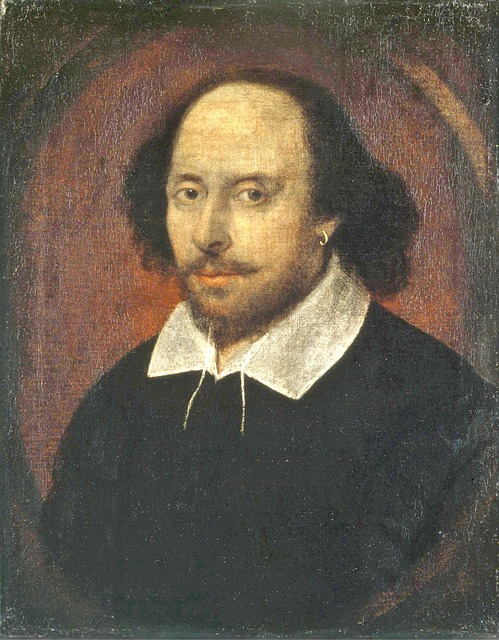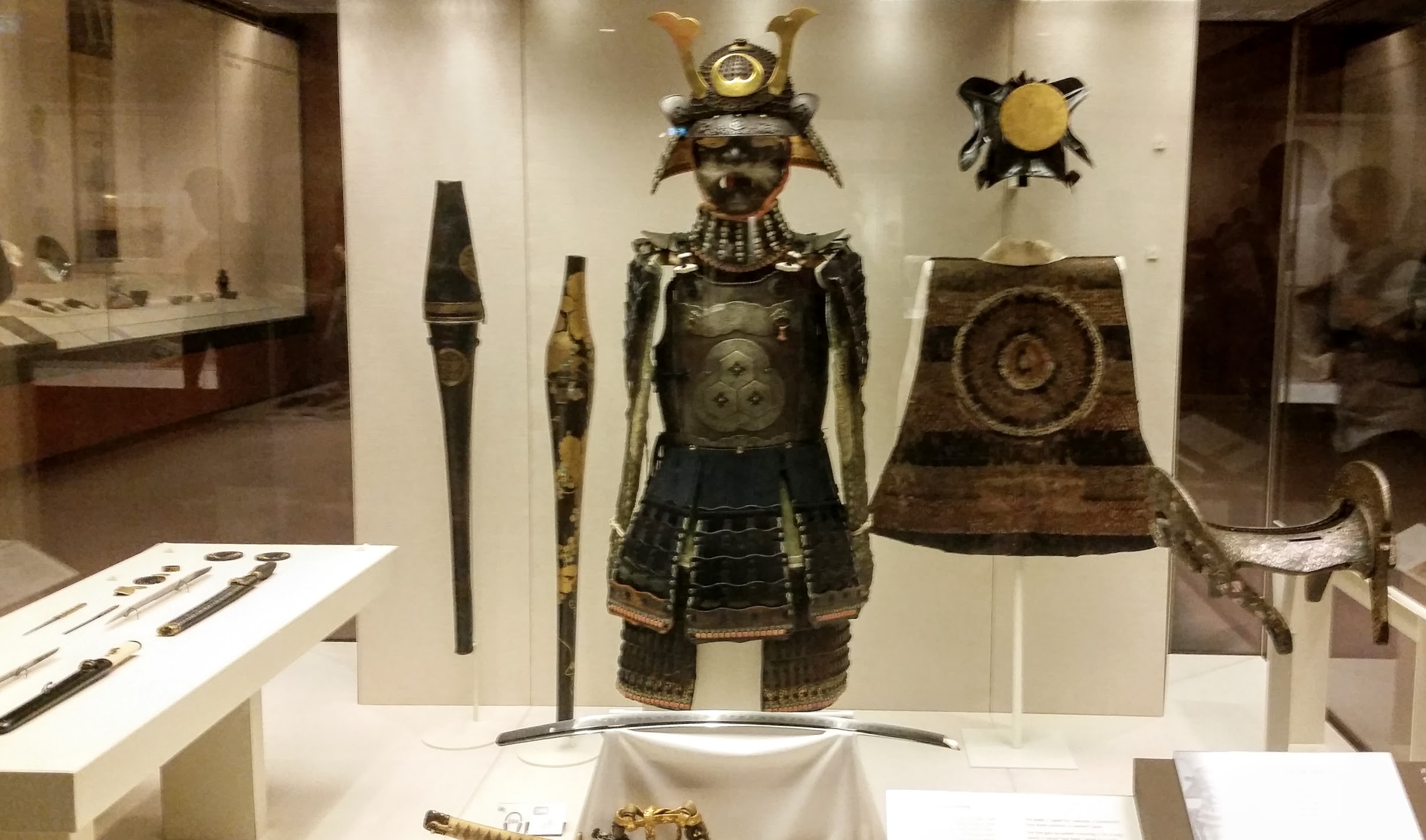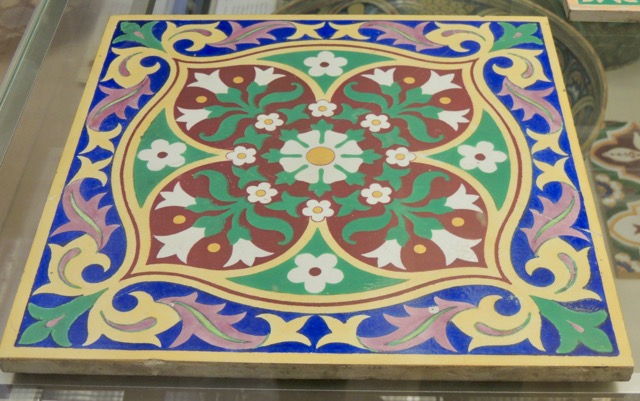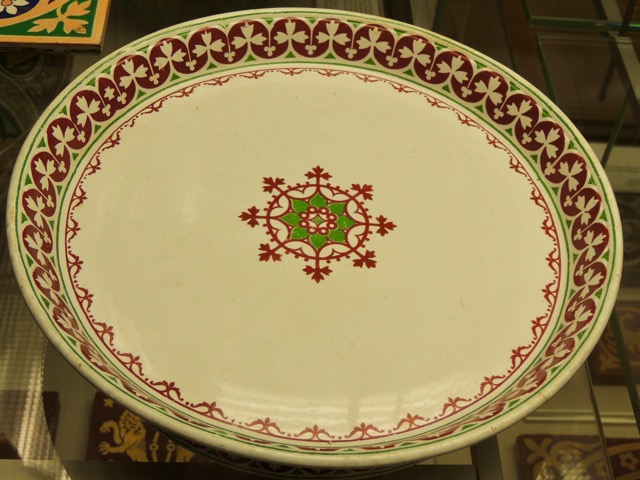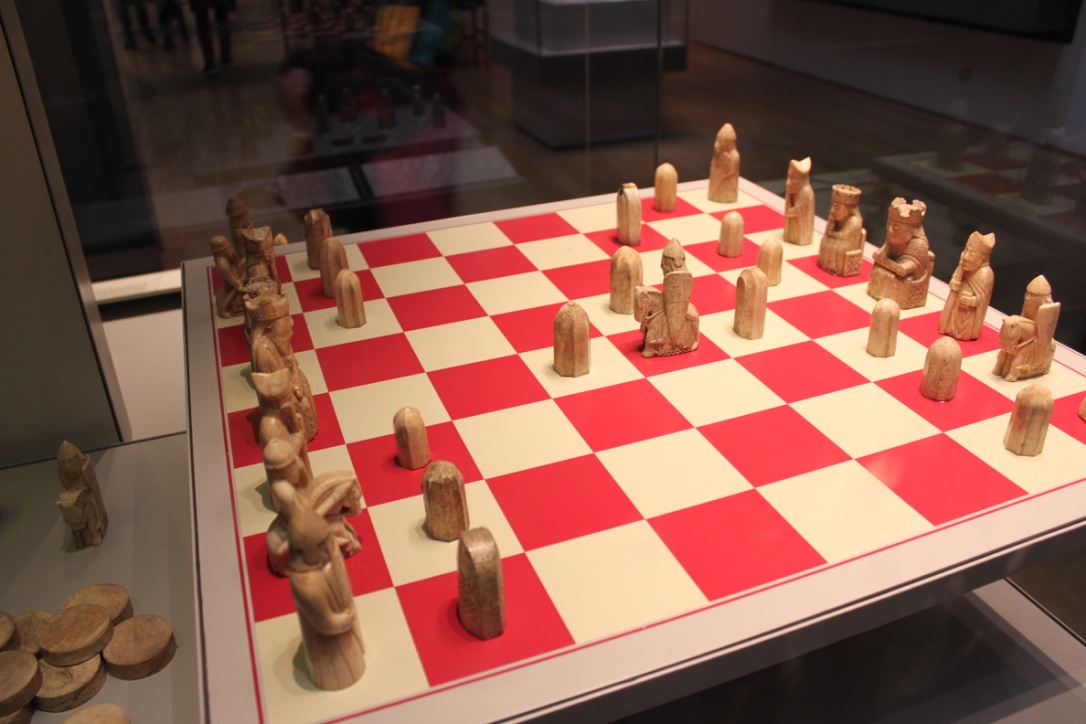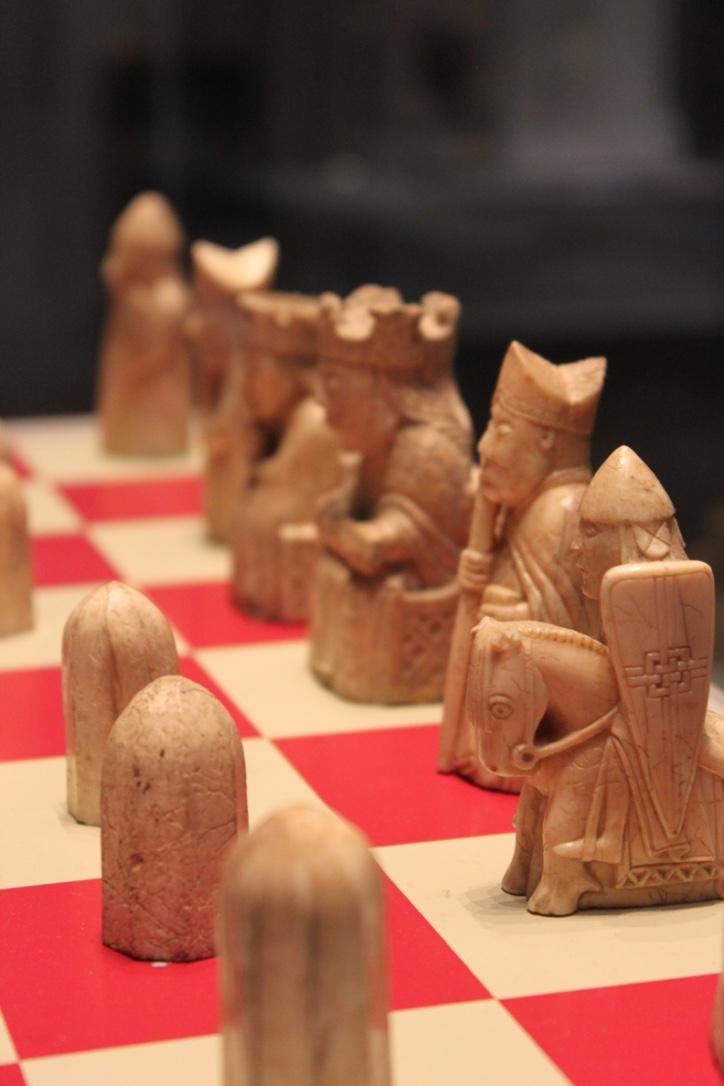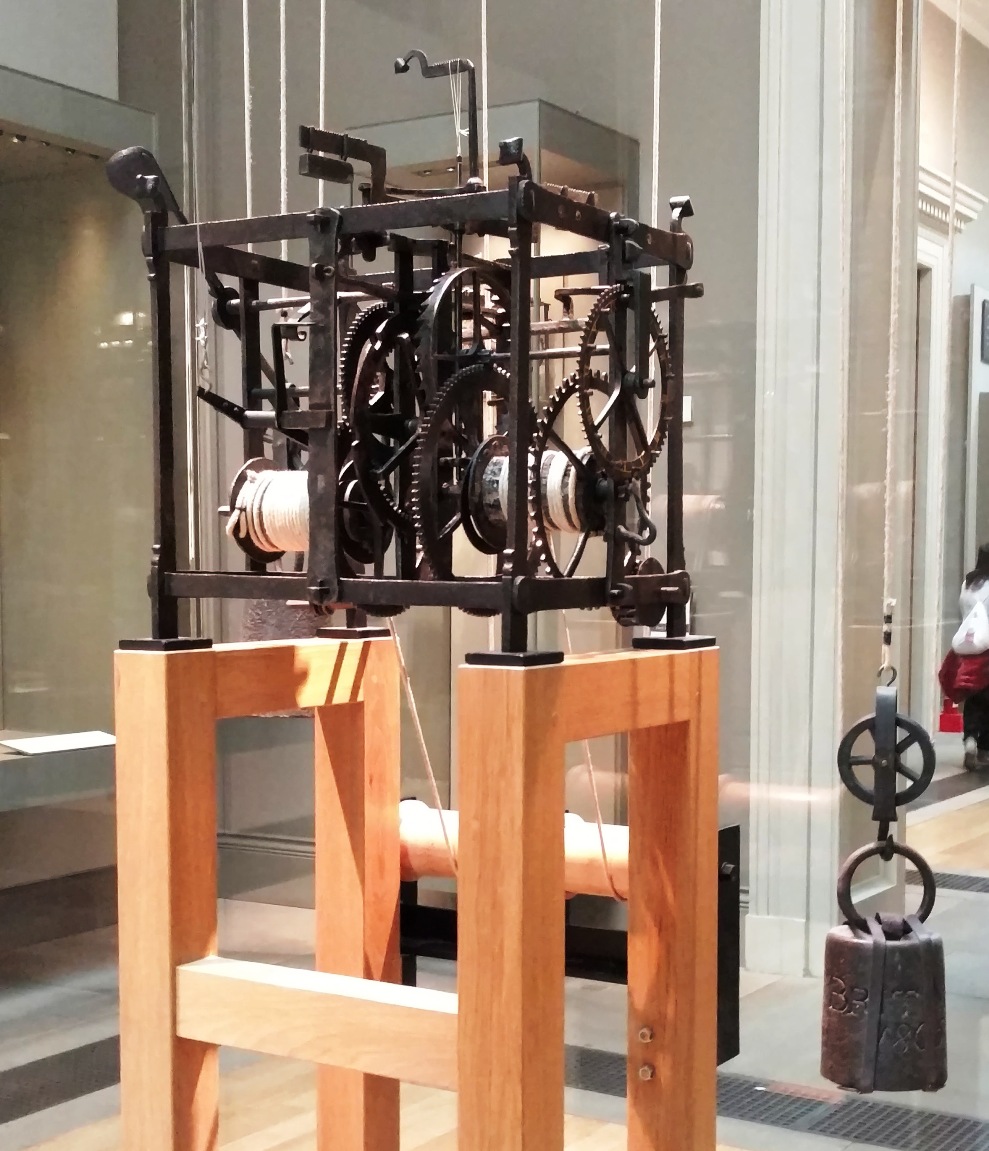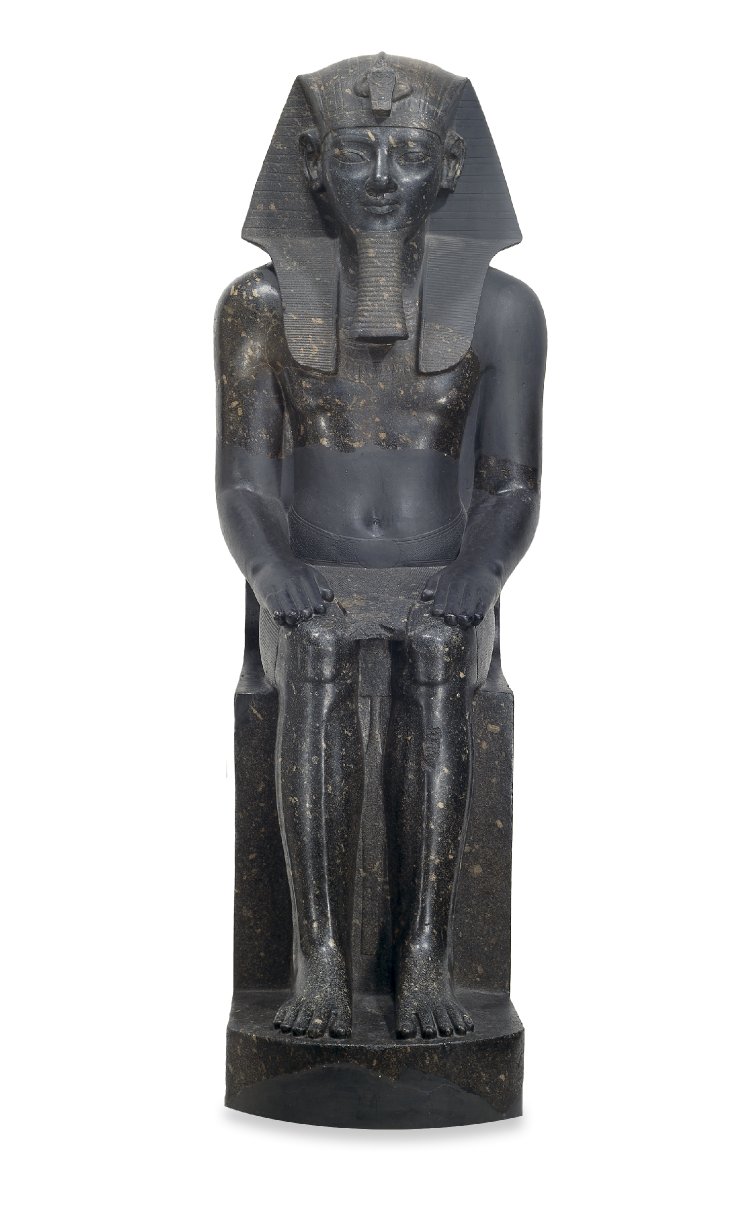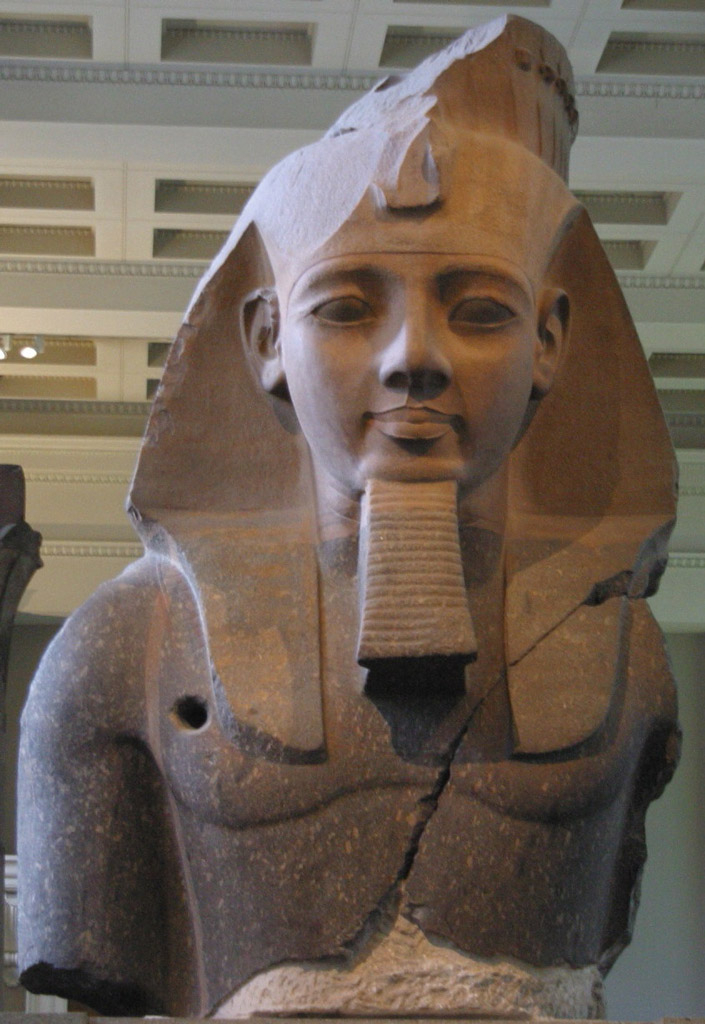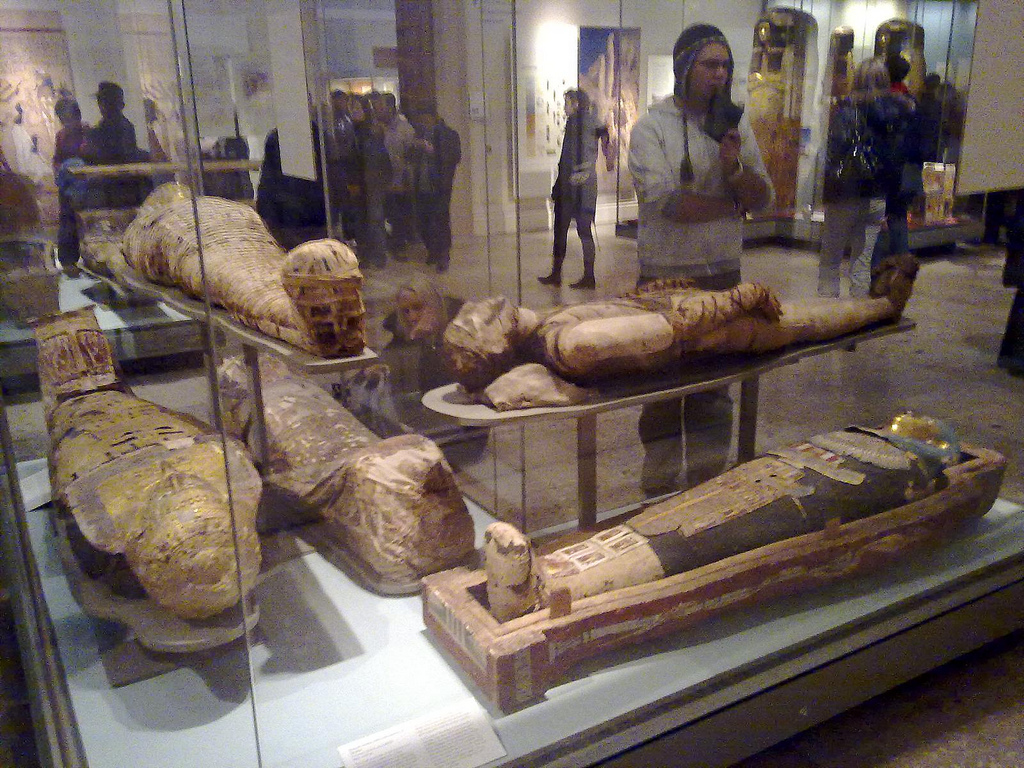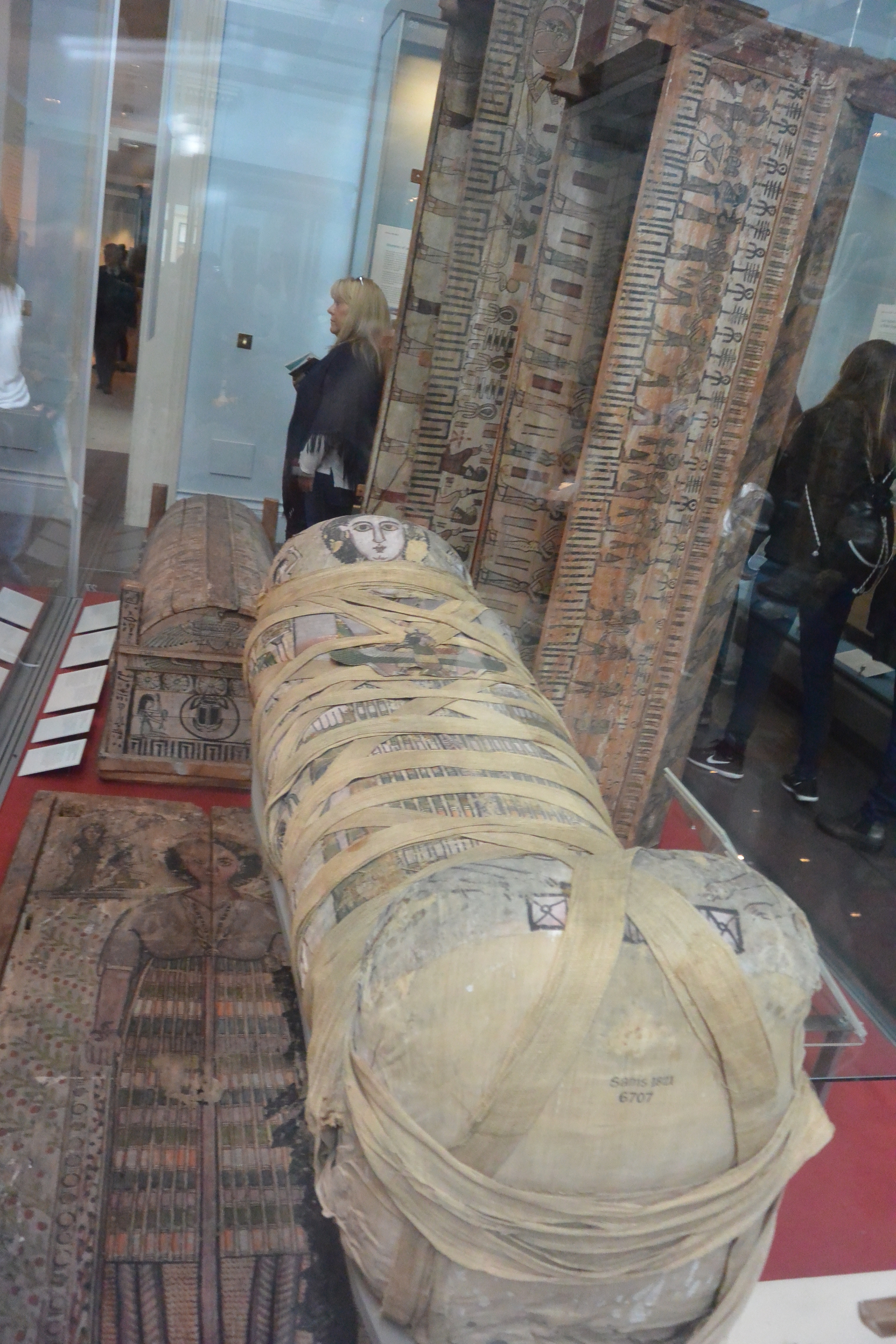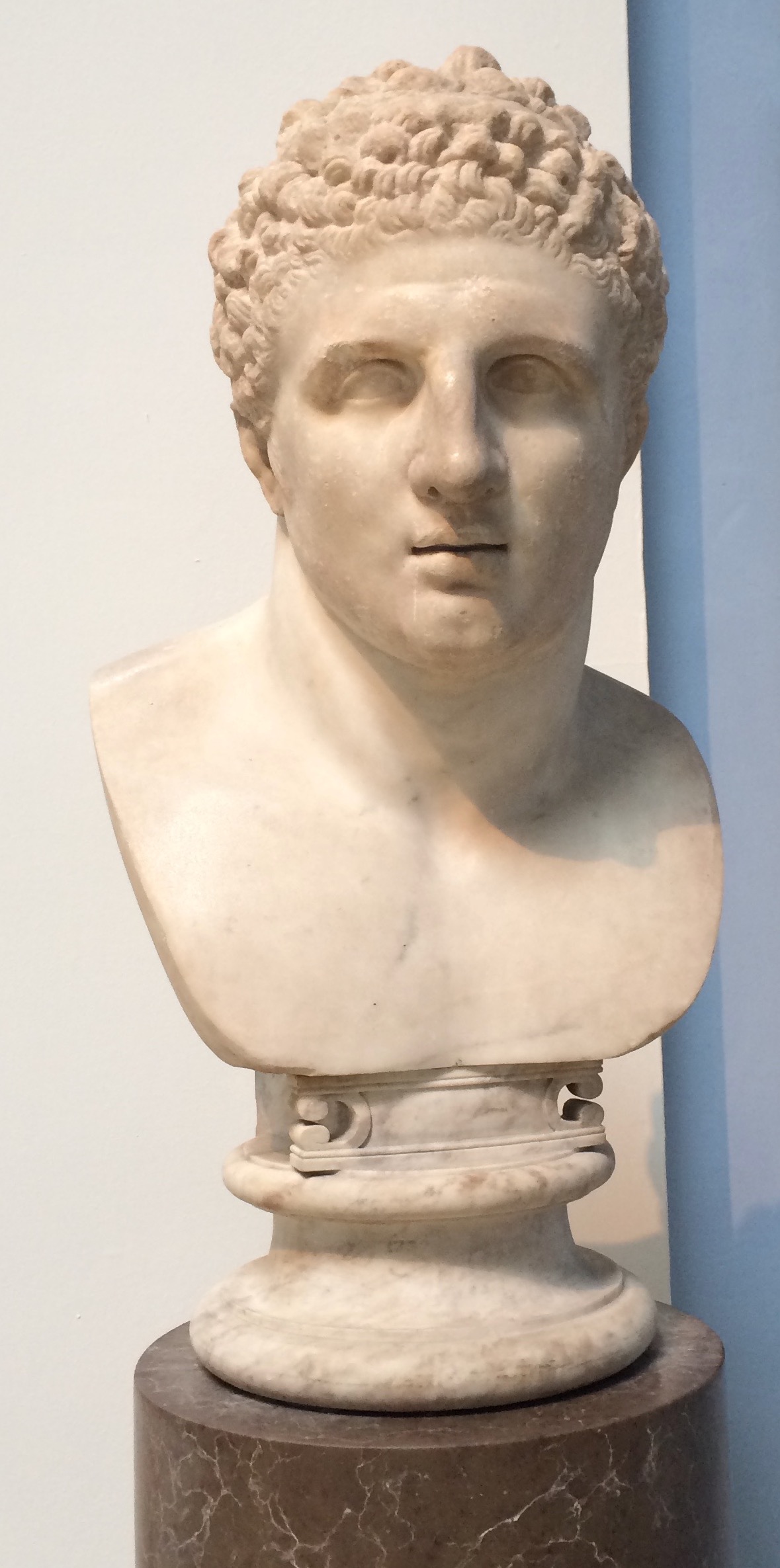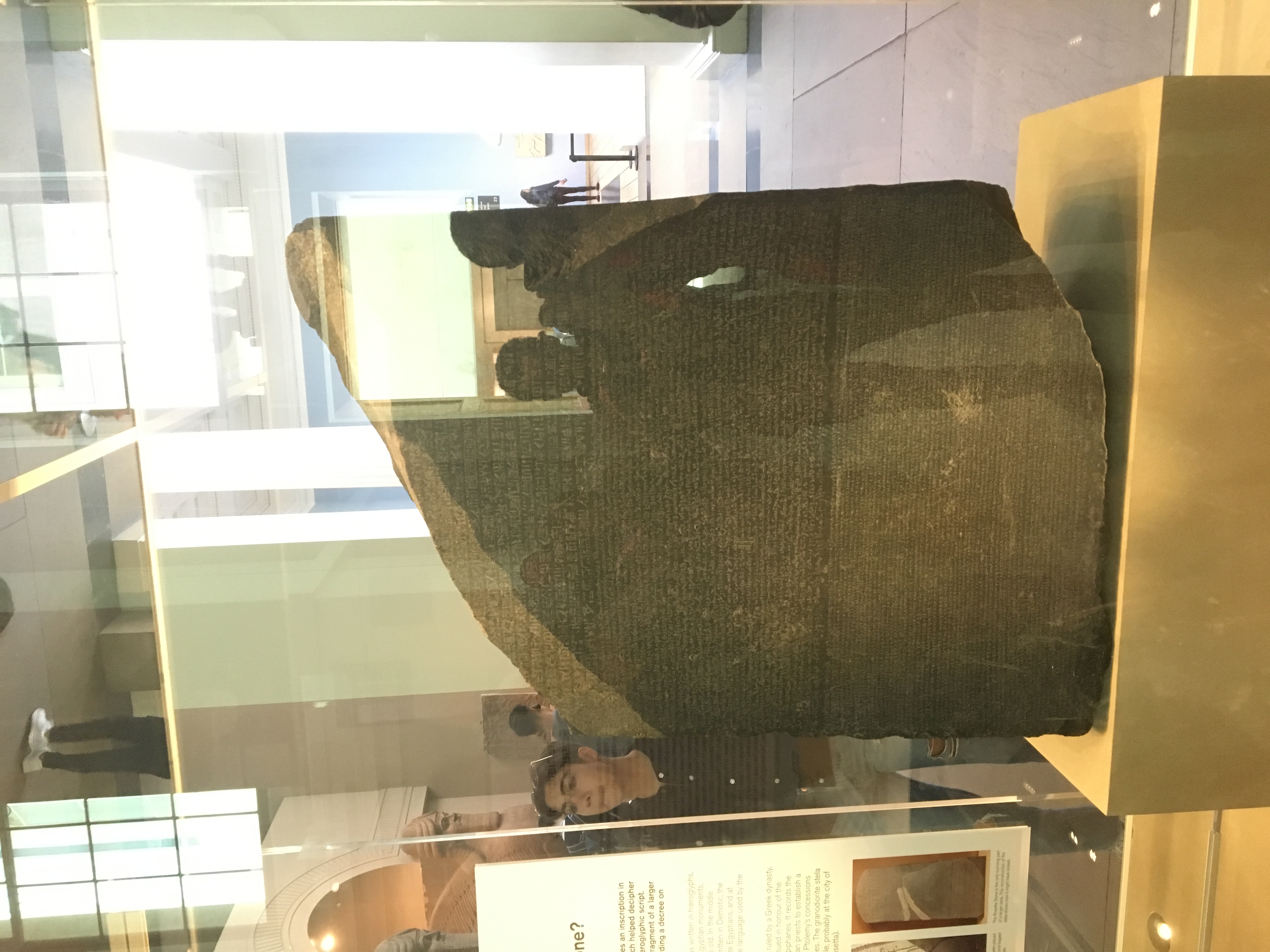Difference between revisions of "British Museum"
From Londonhua WIKI
| Line 31: | Line 31: | ||
[[File: Articlepicture.jpg|x350px|right|thumb|frame|Representative Image]]<br> | [[File: Articlepicture.jpg|x350px|right|thumb|frame|Representative Image]]<br> | ||
===Middle East=== | ===Middle East=== | ||
| − | |||
<br><br> | <br><br> | ||
Revision as of 22:48, 11 May 2017
British Museum
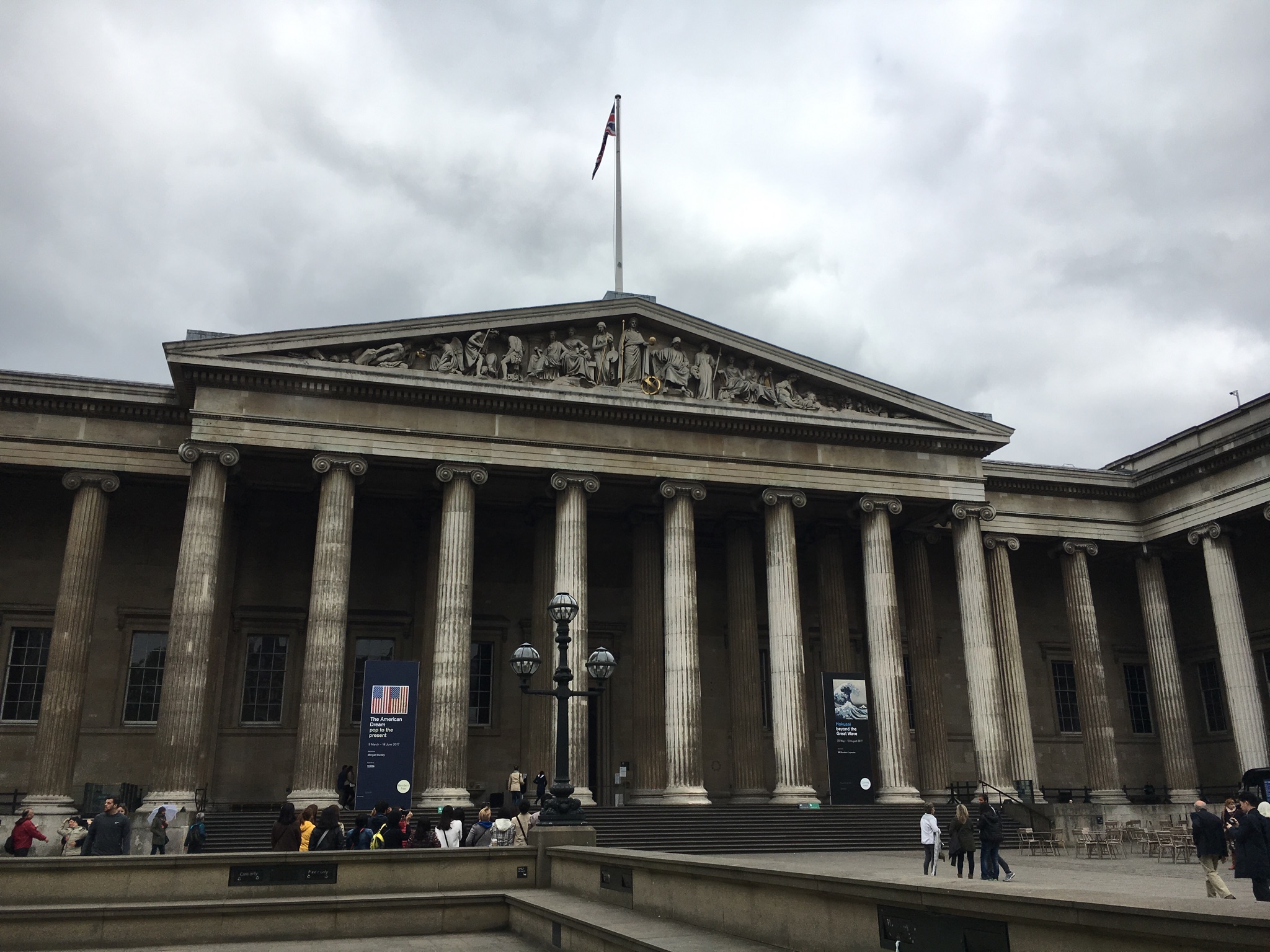 Main Entrance | |
| Artist | Attributed to Olivia Gibbs |
|---|---|
Overview
The British Museum is a free museum located in Bloomsbury, London that contains many artifacts that depict the human experience. It was created in 1753 to allow the general public access to history, art and culture that only the wealthy could afford. The museum contains the most complete and diverse collection of artifacts that totals to almost 8 million.
Contents
Background or Origin of Article
Begin writing the background information of this article, or use this format to begin a new article with some other relevant section filled with important information.
Jewerly Through History
Ancient Egypt and Sudan
Organize each section of this article so that it has a logical flow. If you intend to discuss one aspect of the origin of a person, place, thing, or idea, identify the appropriate existing section of the article, or create that section if it doesn't exist. Then, make a clear subheading. If you notice that some other information is not organized clearly, rearrange the information, but do so cautiously and responsibly! The goal here is clarity for the reader.
Add links to other articles, but do not link to personal student profile pages or milestone pages. Add media as needed in the appropriate sections.
Middle East
Mesopotamia
Background
Geography
Culture
Accomplishments
Prehistory and Europe
Organize each section of this article so that it has a logical flow. If you intend to discuss one aspect of the origin of a person, place, thing, or idea, identify the appropriate existing section of the article, or create that section if it doesn't exist. Then, make a clear subheading. If you notice that some other information is not organized clearly, rearrange the information, but do so cautiously and responsibly! The goal here is clarity for the reader.
Add links to other articles, but do not link to personal student profile pages or milestone pages. Add media as needed in the appropriate sections.
Prehistory and Europe
Organize each section of this article so that it has a logical flow. If you intend to discuss one aspect of the origin of a person, place, thing, or idea, identify the appropriate existing section of the article, or create that section if it doesn't exist. Then, make a clear subheading. If you notice that some other information is not organized clearly, rearrange the information, but do so cautiously and responsibly! The goal here is clarity for the reader.
Add links to other articles, but do not link to personal student profile pages or milestone pages. Add media as needed in the appropriate sections.
Asia
Japan
The Mitsubishi Corporation Japanese Galleries carries a collection of artifacts that explore how change has shaped Japan's past and present and it's relationship with the world. This exhibit transitions through three distinct time periods in Japan's history, ancient and medieval Japan, the Edo period and modern Japan each having it own dedicated room. In around 500 AD Buddist text and statues were brought to Japan from Korea and it was adopted as a major form of religion. The section on medieval Japan focuses on the role of Buddhism, native kami worship, and other religions during this time period. The room on the Edo period focuses on the samurais' role in the Japanese government. This part of the collection contains many pieces of a samurai's armor, artifacts that detail their influence in court and also many pieces dedicated to samurai wives. The final section of the exhibit is about modern Japan and is split into four sections: nation building and empire, city and country, freeing the self, and crafting beauty.
Europe
Earthenware
Earthenware is a special type of pottery made from clay that is fired below 1200 degrees C. In the British Museum you can find tons of earthenware, especially in the Europe 1800-1900 galleries. Below are a few tiles and a cup, all designed by A.W.N Pugin around the 1850's and printed by Minton & Co. The tiles were made from dust clay, which created the smooth surface for printing. However due to limitations some colors were hard to add by printing, so they were added by hand.Printed tiles from medieval times have been found with only two colors, buff, and red. However, the designer Pugin wanted more options so Minton developed more colors which included blue, green, brown, and white.
Chess
The British Museum has on display a full chess game with each individual pawn during the Medieval Europe time period. Many are hand carved with details for powerful pawns. It was during this time, when chess was first created, to be played by knights to build strategy and skill. From playing they built up their tactic abilities which was seen as a positive achievement there for making chess one of seven knightly accomplishments. Clergy were not allowed to play because of the church's ruling on chess, but as time went on they soon loosened their ruling and they too could play. Men and women played chess which had become a way of flirty.
Clocks & Watches
The British Museum has over 900 clocks and 4,500 watches from various stages of their development. This exhibit showcases the development from mechanical clocks to modern radio controlled clocks. The exhibit features one of only two remaining spring-driven clocks from the 15th century. The source energy for early clocks came from weights and had purely mechanical designs. Later on, the idea of the pendulum was introduced. However, pendulums lost their accuracy due to temperature changes as the metal would expand or contract, changing the balance of the pendulum. This was countered with mercury which would behave inversely. A later technology to be introduced was the electromagnet. This allowed synchronization of clocks and correction of error. From there quartz clocks and clocks that can be synchronized via radio waves have developed and are used today. Clocks were more than just science though. They were also an art. Clock makers created elegant designs and owning such clocks was a symbol of wealth. Sir William Congreve designed a rolling ball clock which had a ball that rolls from one side of a table to another taking 30 seconds each way. While it was unreliable it displayed the designers creativity and skill.
Samian Pottery
Samian Ware or "Terra Sigillata" refers to a specific pottery type dating back to the Roman empire. This form of pottery was first classified by Hans Dragendorff, a German scholar, in 1890, though over time other specific classifications have been added. Samian pottery was very standardized in both size and shape, but individual workshops used specific motifs, so historians have now been able to identify which pieces were made by the different workshops. Undecorated and unstamped Samian pottery can also be identified just based on the color and texture of the clay. Pottery made with decorations on them were produced using fired clay moulds that were made using clay stamps. The decorations on the pottery were based mainly on mythology and were made by Gaulish potters, however in Britain they would have been generally called Roman. This pottery is a product of the romanization of Britain. The exhibit in the British Museum features a collection of some common shapes of Samian pottery which can be found on the Roman Britain exhibit.
Africa
Ancient Egypt
Sculpture
The British Museum holds one of the largest, and most extensive, collection of Egyptian artifacts, many of which are statues. A significant portion of this collection is located on the first floor and is comprised of statues. With most of them being made from stone, mainly granodiorite and quartzite. The statues depict important figures from Egyptian history, including Ramesses II, Amenhotep III, as well as Gods. The museum also contains sarcophagi made for various leaders. In the second floor gallery, mummies lying within their sarcophagus are on display; these sarcophagi are much more decorated, containing both paintings and carvings rather than just the carvings, then the stone ones below. One exhibit focuses on the Tomb-chapel of Nebamun which houses Nebamun, a wealthy accountant.
Mummy of Cleopatra
Cleopatra was the daughter of Candace and a member of the family of Cornelius Pollius, Archon of Thebes in the time of the Emperor Trajan. Cleopatra died when she was 17 years, 1 month, and 25 days old according to the inscription on her coffin. This debunked writings that said she died when she was 11 years old. The body is wrapped in a criss cross of bandages decorated to honor Nut, Isis, Anubus and other deities. The body is believed to be in very good shape, however they cannot determine due to dense material under the bandages blocking x-rays. It was believed to have been buried around 100-120 AD.
Sudan
Greek and Roman
Roman Empire
Following the fall of the Greek Empire, the Roman Empire stretched huge distances and was the largest empire the world had ever seen. It reached as far as northern Britain with Hadrian's Wall and to the Nile River in Egypt at its height. The Romans were a modern society for the time that had the ability to rule over great distances from a single central capital. In order to maintain such a large empire, the Roman's needed a strong and well organized army. Many Roman citizens devoted their lives to the Roman army so the empire could protect its borders and keep out unwanted visitors. They developed the city of Rome into a huge city with many architectural and technological advancements, like aqueducts and the great Roman Colosseum.
Busts
Carved from marble, Greek and Roman busts depict the upper body of the human figure. Each bust is supported by a single pedestal, known as a plinth, that vary in design and scale. The Roman empire drew large influence from Greek religion, culture, and art. This can be clear seen in Roman imitation sculptures and art inspired by Greek myths and figures. As such, sculptures produced by both Ancient Greece and the Roman Empire share similar styles and components including sculpting materials, realistic imitation of the human form, and depiction of myths and mythical characters.
Nereid Monument
The Nereid Monument was built for Arbinas, a Xanthian dynast, and his family. Although it was built in south-west Turkey, its design was heavily influenced by the Greek mainland as can be seen. The design and sculpture is Greek, but what is portrayed is Lykian.
Parthenon
Dedicated to the goddess Athena, the Parthenon was a formal temple located on the Athenian Acropolis in Greece. It was built in 447 BC when the Athenian Empire was at its most powerful and completed in 438 BC with decorations continuing until 432 BC. Although called a temple, it was not used in the modern sense of the word. A large shrine was excavated from the site of Athena. This shrine and the temple were most likely used as a way to get close to Athena and to worship her, yet the temple never hosted the cult of Athena. The massive statue inside of the temple was sculpted by Phidias and was not related to any sort of cult. The statue wasn't even known to carry any religious weight to it, but rather, only as a shrine dedicated to Athena. The Parthenon also had incredibly detailed sculptures around the entirety of the Doric inspired temple. There are three layers to these sculptures: the metopes, friezes, and the pediments. The metopes were 92 (14 on each of the west and east sides, and 32 on earth of the north and south sides) smaller sculptures carved into the stone of the Parthenon that resembled battles between the Gods and giants and between the Athenians and Amazons along with battles of mythical creatures. Above those on the east and west sides are the pediments. The east side represents the brith of Athena from the head of her father, Zeus, while the west side depicts the competition between Athena and Poseidon. This competition was to determine who would be the city's patron, and in the end, Athena was victorious.
Rosetta Stone
Inscribed on the stone is the same decree in three languages: Hieroglyphic script, Demotic script, and Ancient Greek. The stone originated in a temple, before being used as building material when it was more recently discovered in Fort Julien near Rashid, Egypt by a French Soldier in 1799. When the British invaded Egypt at the beginning of the 1800s, they took the stone and it has been on display since then in the British Museum. The museum has a copy of the stone in the Kings Library that you can touch, while the actual stone in encased in room 4. Copies and models were made and given to scholars around the world in an attempt to decipher it, with Thomas Young and Jean-Francois Champollion contributing heavily to the understanding of the languages. Having the same decree in three languages aided in the deciphering of Egyptian Hieroglyphics
Great Migrations
Franks
Visigoths
Lombards
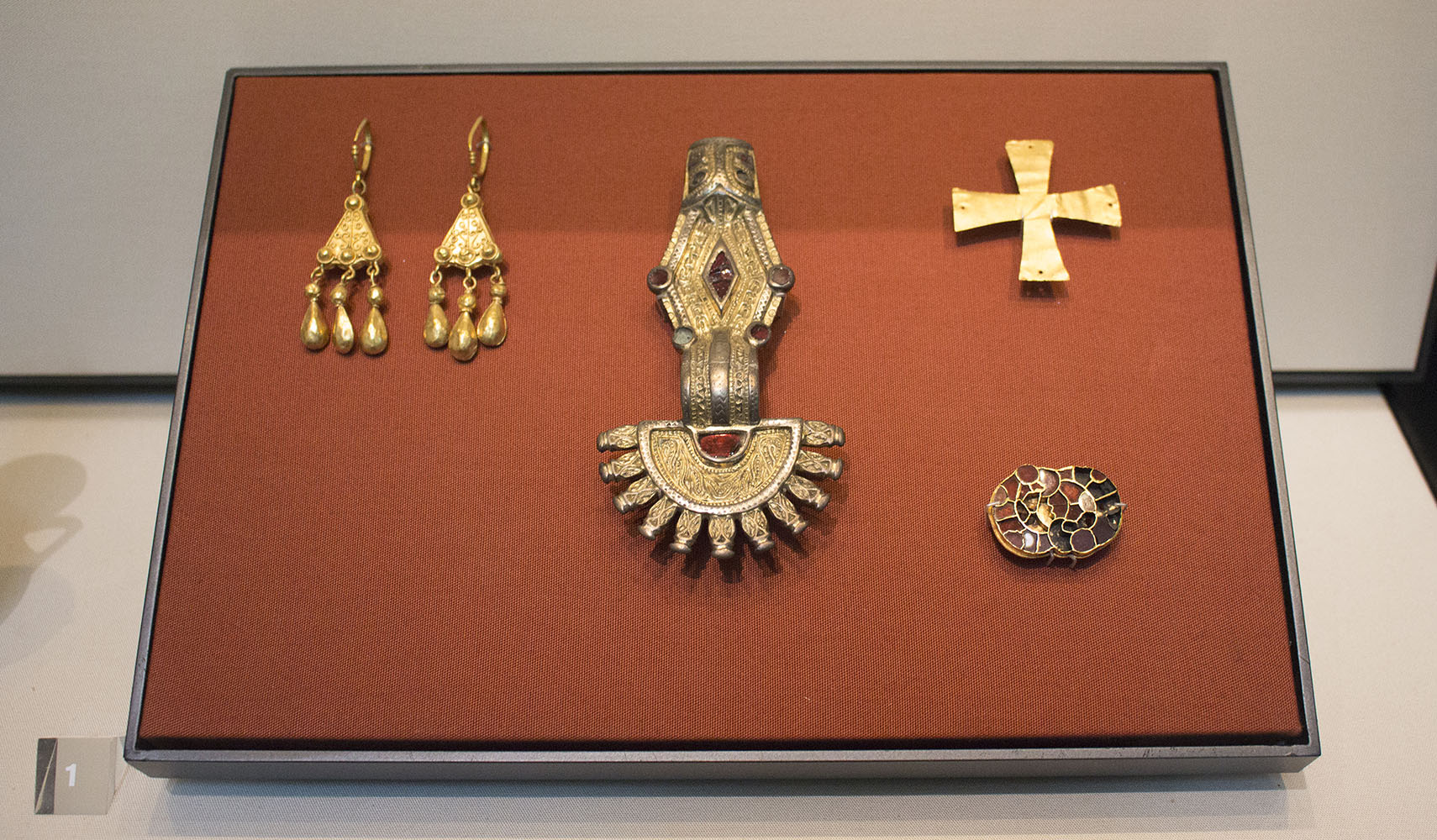 Found at a grave site, the finger ring contains a Germanic name, but was used for sealing documents in what is Roman tradition. |
The Lombards were a Germanic people, residing in southern Scandinavia, migrating further south until reaching Italy. They conquered the area, which was devastated after the Gothic War between the Ostrogoths and the Byzantine Empire. For two centuries they ruled a large part of Italy, save for territories the Byzantines were able to hold on to, like Rome and Ravenna. However, as time went on, they gradually began adopting Byzantine traditions, including practicing Christianity.
The resulting Lombardic Kingdom
Cultural Effects on Migrants
References
If appropriate, add a references section
External Links
If appropriate, add an external links section
Image Gallery
If appropriate, add an image gallery
